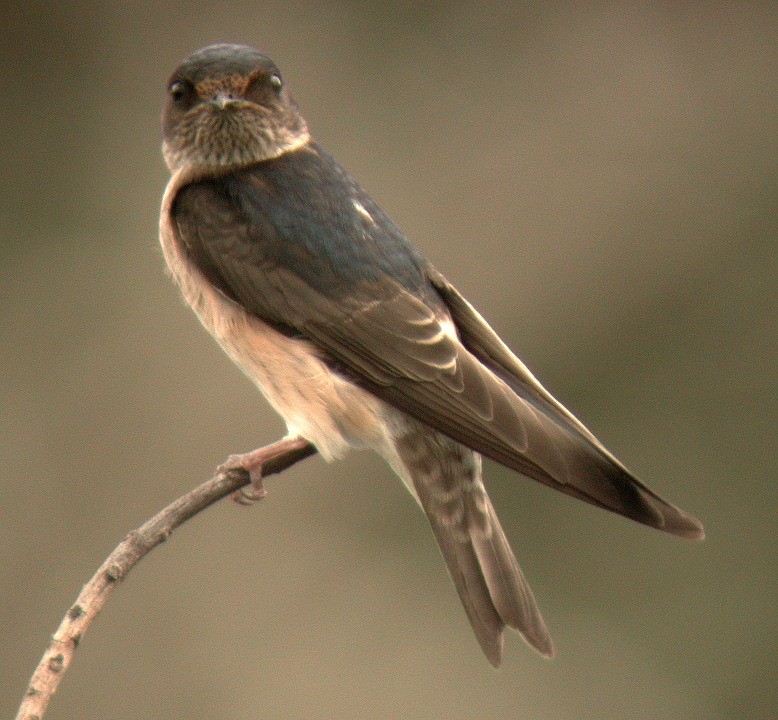Tree Martin
A species of Cliff Swallows and Allies Scientific name : Petrochelidon nigricans Genus : Cliff Swallows and Allies
Tree Martin, A species of Cliff Swallows and Allies
Botanical name: Petrochelidon nigricans
Genus: Cliff Swallows and Allies
Content
Description General Info
 Photo By Aviceda , used under CC-BY-SA-3.0 /Cropped and compressed from original
Photo By Aviceda , used under CC-BY-SA-3.0 /Cropped and compressed from original Description
The tree martin averages 13 cm long and has a shallowly forked tail. The adult has an iridescent blue back and crown, brown wings and tail, a rufous forehead and a whitish rump. The underparts are white. The sexes are similar, but young birds are duller and browner, with a paler forehead and pale fringes to the back and wing feathers. The call of this vocal swallow is a tsweet and the song is a high-pitched twitter. This species can be distinguished from other Australian swallows by its tail shape and pale rump. The most similar species, the fairy martin, has a rufous head and nape The tree martin has three subspecies: P. n. nigricans, the largest subspecies, breeds in eastern Australia, except northern Queensland, and is the form that has bred in New Zealand. P. n. neglecta breeds in western and northern Australia. It is slightly smaller than nominate nigricans at 11–12 cm length. P. n. timoriensis, the smallest subspecies, breeds mainly in Timor. It has dark streaks on the throat and neck. 
Size
13 cm
Nest Placement
Building
Feeding Habits
Tree Martin's diet consists primarily of flying insects such as wasps, ants, flies, beetles, and spiders. They forage solo or in groups, often more than 6 meters above ground, with quick flight patterns. Unique in their high-altitude hunting preference.
Habitat
Tree Martin typically inhabits open woodlands adjacent to water bodies. They are adaptable and can be found in proximity to human settlements, including urban areas. Their foraging activities extend over trees, water bodies, farmland, and pastures, occasionally even out to sea. Common roosting sites for tree Martin include reedbeds and eucalyptus trees.
Dite type
Insectivorous
General Info
Feeding Habits
Bird food type
Behavior
Tree martins breed, depending on region, from July through to January, either in pairs or semi-colonially depending on nest site availability. Nests are constructed in natural holes in dead trees or rock crevices, but increasingly in artificial sites on bridges and buildings. This is most common in western Australia, where breeding occurs even in large cities like Adelaide and Perth. Tree martins also occasionally reline the nests of welcome swallows, and may displace the owners to obtain the nest. The nest, unusually for a cliff swallow, is often made just from grass and leaves, but may be reinforced with mud. A mud and plant fibre cement is also used to reduce the width of the entrance to the breeding hole. The clutch is 3–5, usually four, brown and mauve-spotted white eggs, and this species is often double-brooded. Tree martins have a fast twisting flight and feed higher than welcome swallows, often more than 6 m above the ground. They are frequently seen above tall eucalyptus trees catching aerial insects above the canopy, but will also feed on insect swarms low over water. This species can be highly gregarious when not breeding, and will form mixed flocks with fairy martins. 
Species Status
Not globally threatened.